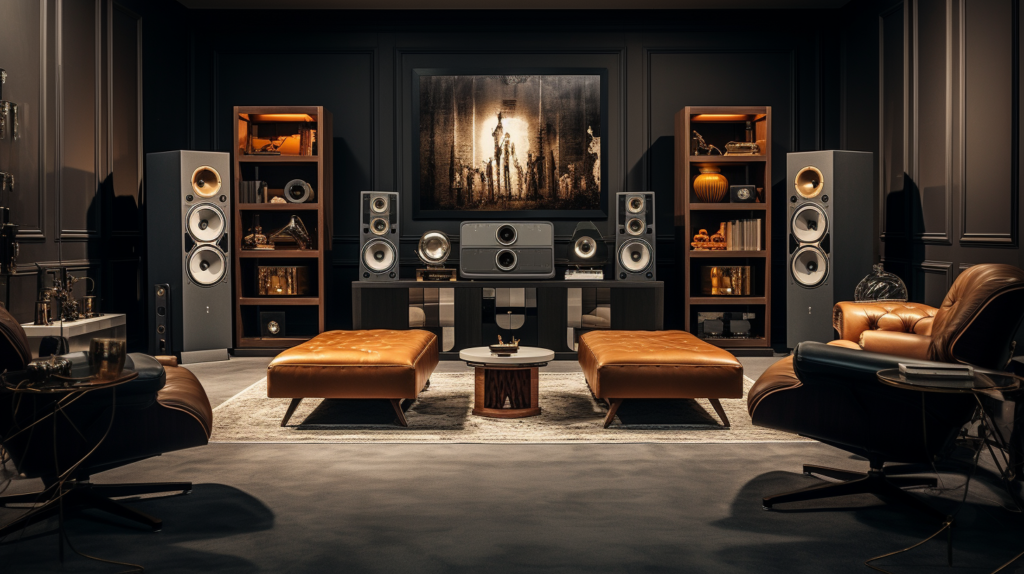There’s something truly special about immersing ourselves in the world of music or movies. But have you ever wondered what it would be like to experience sound in its purest form? This is where Hi-Fi Audio steps in, offering a gateway to an extraordinary sonic adventure.
In this article, we will explore the realm of Hi-Fi Audio, unravel its essence, delve into its key characteristics, understand the buzz surrounding it, evaluate its worth as an investment, address common misconceptions, and highlight personal preference in the pursuit of audio perfection.
Understanding Hi-Fi Audio
Hi-Fi Audio means high-fidelity audio systems that aim to reproduce sound with great accuracy and quality. These systems use high-quality parts and follow specific technical guidelines. The benefits of Hi-Fi Audio include:
- Better sound quality
- An immersive listening experience
- Attention to detail
Compared to regular audio systems, Hi-Fi setups make the overall audio experience much better.
Key characteristics of Hi-Fi audio
- Accuracy: Hi-Fi systems aim to reproduce sound very accurately, without distorting it. They strive to faithfully capture all the details and nuances of the music or audio, just like the original recording.
- Frequency response: Hi-Fi systems can accurately reproduce both low and high frequencies because they have a wide frequency range. This helps create a rich and balanced sound.
- Dynamic range: Hi-Fi audio systems preserve the original recording’s dynamic range. Dynamic range refers to the difference between the softest and loudest sounds in a piece of music. By maintaining a wide dynamic range, the system can reproduce both quiet and loud parts without compression or distortion.
- Low noise and distortion: Hi-Fi systems are designed to minimize unwanted noise and distortion, keeping the audio signal clean and true to the original recording.
- Separation and imaging: Hi-Fi systems offer good separation between the audio channels (left and right), which enhances stereo imaging. This allows you to feel the depth and location of instruments or sounds.
Related Articles:
- Audio formats MP3, AAC, WAV and FlAC explained
- Here are the best Mini Projectors of 2023
- MPOW 059 Review: The Budget Over-Ear Headphones You Should Buy
- Bluedio T7 Plus(Turbine) Over-ear wireless Bluetooth headphone review
The Buzz Around Hi-Fi Audio
Hi-Fi Audio has attracted a passionate community of enthusiasts called audiophiles. These people love pursuing Hi-Fi Audio and have created a vibrant community dedicated to appreciating high-quality sound. The audio industry has also contributed to the excitement around Hi-Fi Audio, taking advantage of its growing popularity. Media, reviews, and endorsements have further fueled the buzz, making Hi-Fi Audio a desirable choice for audio enthusiasts.
Requirements for Hi-Fi Audio Access
To fully experience Hi-Fi Audio, certain requirements must be met.
- Firstly, it is important to have access to high-quality source material, such as Apple’s Lossless, TIDAL’s Master Quality, or Deezer’s Hi-Fi. These platforms offer music in formats that preserve audio fidelity.
- Secondly, the audio playback system plays a crucial role. While True Wireless Stereo (TWS) earbuds are convenient and popular, they typically do not support Hi-Fi audio due to their limited internal hardware capabilities. To truly unlock the potential of Hi-Fi Audio, dedicated audio setups that include high-quality wired headphones, speakers, or amplifiers are recommended.
The Role of Digital-to-Analog Converters (DACs)
DACs play a vital part in Hi-Fi audio systems. They are responsible for converting digital audio signals into analog signals that can be accurately reproduced by speakers or headphones. High-quality DACs ensure precise and faithful conversion, minimizing any potential loss of audio quality during the process. Some Hi-Fi setups may include external DACs to enhance the audio fidelity even further.
Considering the Investment
Investing in Hi-Fi Audio systems can be expensive. You need to consider the costs of equipment, cables, and setup. However, the value for money is subjective and depends on personal preferences. While Hi-Fi Audio systems offer exceptional performance and enjoyment, it’s important to think about whether the associated costs fit your budget and priorities. Additionally, Hi-Fi Audio systems are known for their durability and long lifespan, providing value over time.
Dispelling Myths and Misconceptions
Some people mistakenly believe that Hi-Fi Audio is only for snobbish audiophiles or elites. The truth is that Hi-Fi Audio is accessible to anyone who appreciates high-quality sound. It’s important to have realistic expectations and understand that Hi-Fi Audio systems have limitations and may not achieve “perfect” sound. However, they still offer significant improvements over regular audio setups.
Personal Preference and Subjectivity
Audio preferences are subjective, and Hi-Fi Audio may not be suitable for everyone. It is crucial to consider your personal enjoyment and satisfaction when evaluating the value of Hi-Fi Audio. Ultimately, the most important factor is finding an audio setup that aligns with your preferences and provides a deeply fulfilling listening experience.
Hi-Fi audio enthusiasts dive into a world of outstanding sound quality, seeking an experience that goes beyond simple listening. With its commitment to accuracy, wide frequency response, dynamic range preservation, low noise, and exceptional imaging, Hi-Fi audio delivers an enchanting journey into the heart of music.
By combining high-quality source material and meticulously crafted audio components, Hi-Fi systems offer an unmatched sonic adventure that brings recordings to life, allowing you to rediscover the depth and emotion woven into every note.

